Previewing Silicon Motion SM2260 NVMe Controller With 3D MLC NAND (512GB)
by Billy Tallis on February 17, 2017 9:00 AM ESTATTO
ATTO's Disk Benchmark is a quick and easy freeware tool to measure drive performance across various transfer sizes.
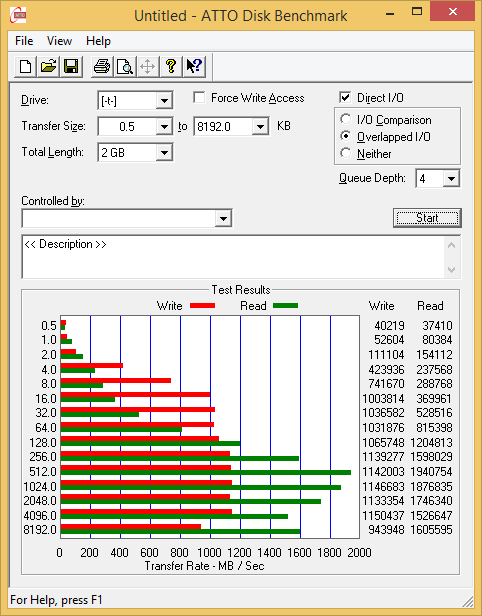 |
|||||||||
The SM2260 is close to its full write speed when the transfer size is 16kB, but full read speed takes much longer to attain and occurs at 512kB, after which thermal throttling slows things back down.
AS-SSD
AS-SSD is another quick and free benchmark tool. It uses incompressible data for all of its tests, making it an easy way to keep an eye on which drives are relying on transparent data compression. The short duration of the test makes it a decent indicator of peak drive performance.
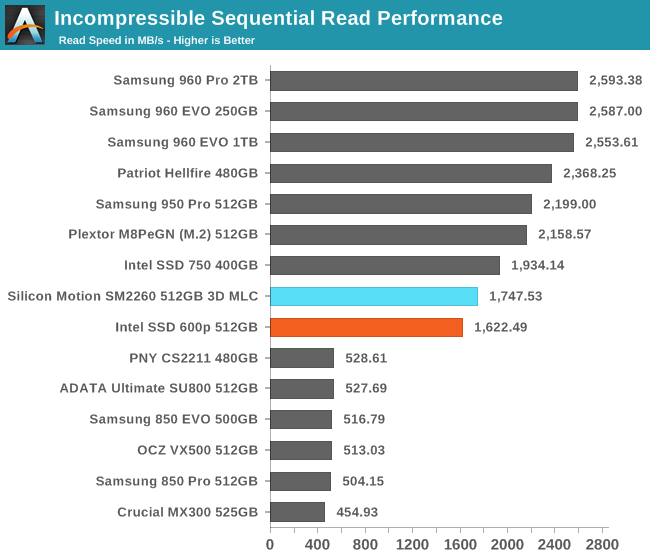
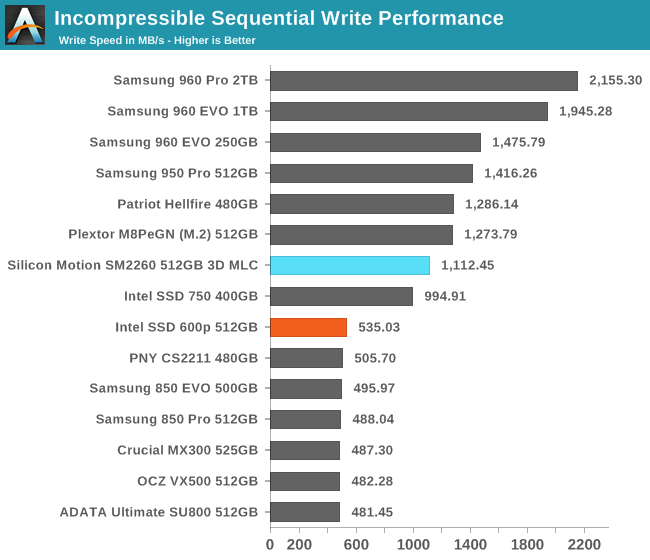
The peak sequential read speed of the SM2260 sample as measured by AS-SSD is slightly higher than the Intel SSD 600p instead of being tied as shown by our longer IOmeter test, but they both are still behind the rest of the NVMe crowd. For write speed, the SLC cache enables the SM2260 to beat the Intel SSD 750 in addition to the 600p, but it is also slightly slower than its more recent NVMe competition.
Idle Power Consumption
Since the ATSB tests based on real-world usage cut idle times short to 25ms, their power consumption scores paint an inaccurate picture of the relative suitability of drives for mobile use. During real-world client use, a solid state drive will spend far more time idle than actively processing commands. We report two measures of idle power consumption: active idle where the SSD is not in use but has not been put in to any low-power sleep state, and idle power consumption in the deepest sleep state supported by our testbed. For NVMe SSDs, the lowest drive power state is measured but PCIe Active State Power Management (ASPM) is not used due to limitations of this motherboard. For SATA SSDs, aggressive link power management is used to put the SATA link into slumber state. Many SSDs support a deeper DevSleep state, but this cannot be engaged using ordinary desktop platforms.
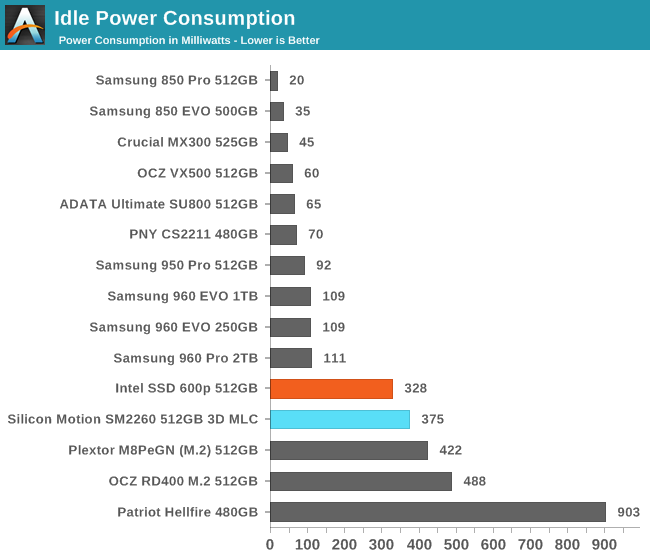
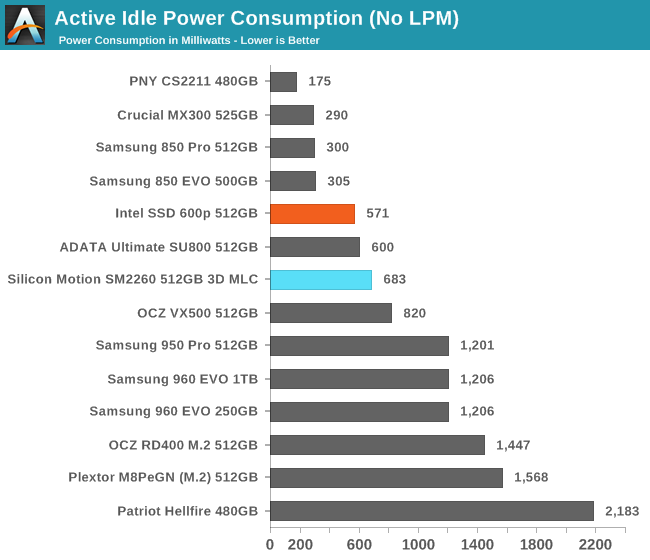
The SM2260 sample has slightly worse idle power consumption than the Intel SSD 600p, but it's ahead of the Plextor M8Pe and OCZ RD400, while the Phison E7-based Patriot Hellfire is in a distant last place among M.2 PCIe SSDs. Samsung continues to deliver far better idle power that is close to what we typically see for SATA SSDs.
For active idle power without making use of any explicit power saving modes, the SM2260 does better than any PCIe SSD and better than at least one SATA SSD, but the SM2260 sample is still using a bit more power than the Intel SSD 600p.










27 Comments
View All Comments
romrunning - Friday, February 17, 2017 - link
You would have thought their design performance target would have been the older 950 Pro (not the newer 960 line) or the even-older Intel 750 . But no, it seems they are competing with Phison for the lowest-performing NVMe SSD award. Disappointing - just like that Intel 600p.ddriver - Friday, February 17, 2017 - link
First look: slow. Second look: still slow. It is quite the feat they manage to make an nvme controller almost as slow as sata.jjj - Friday, February 17, 2017 - link
Guess it's a sub 200$ drive, we'll see how it does against WD's offering and Plextor M8Se.Not worth wasting the M.2 slot on such a drive, unless it's well bellow 200$. Right now on Newegg, the M8Pe without a shield is 220$.
kissiel - Friday, February 17, 2017 - link
Isn't the Z97Pro bottlenecking the drive?AFAIK it's pcie2.0 x 2 - > so sub 1GiB/s tops.
revanchrist - Friday, February 17, 2017 - link
True that. It's a 10Gbps M.2 rather than the newer 32Gbps M.2 slot.fanofanand - Friday, February 17, 2017 - link
Nice catch! Strange for one of the top tech sites in the world to use old tech to test new tech. Very strange indeed. Ryan? Can you squeeze Purch to get some current equipment into your reviewer's hands?DanNeely - Friday, February 17, 2017 - link
I don't think so. The last page of the article shows the card in a x4 PCIe adapter. AFAIK that's plugged into 3.0 lanes from the CPU both for performance testing and to monitor the power draw.Billy Tallis - Friday, February 17, 2017 - link
Exactly right. All PCIe SSDs are tested in the PCIe 3.0 x16 slot with a riser card that has the power measurement points on it. Although, I did also test the Intel 600p in the motherboard's M.2 slot to see how much the slowest NVMe drive would be affected.kissiel - Saturday, February 18, 2017 - link
Thanks!Please consider pointing that out in a test bed info next time, so people will know what to expect with a similar combo (z97+m.2).
Keep up, the good work!
TelstarTOS - Friday, February 17, 2017 - link
Another piece of crap. This controller should be trashed away.